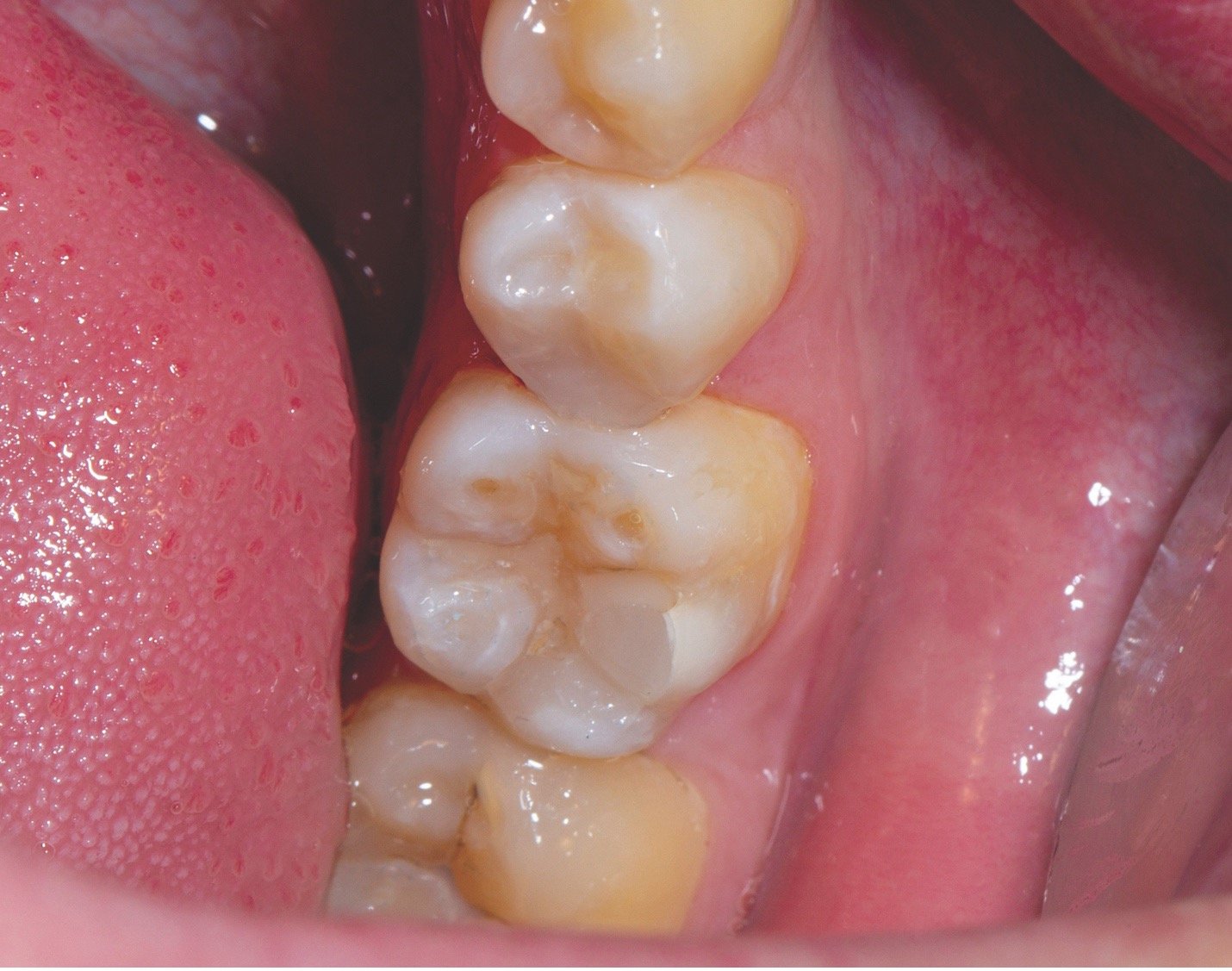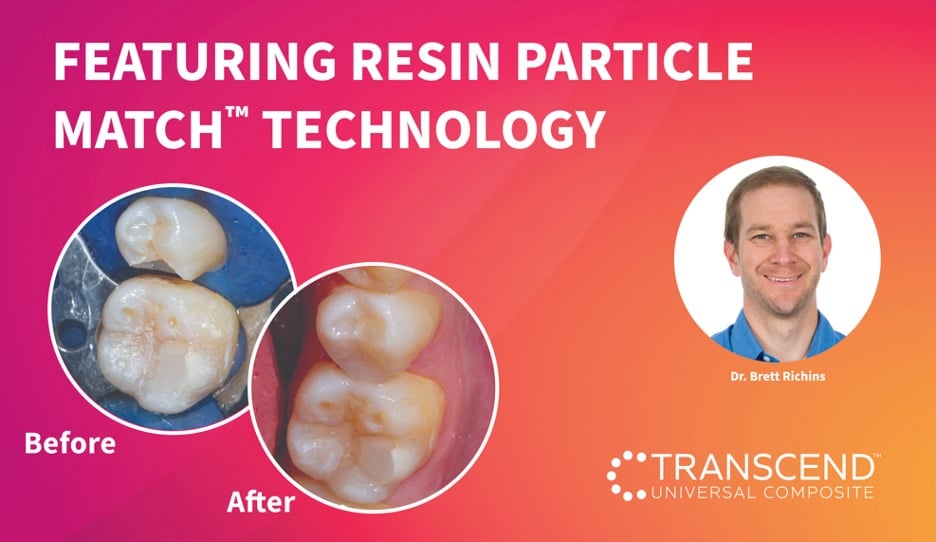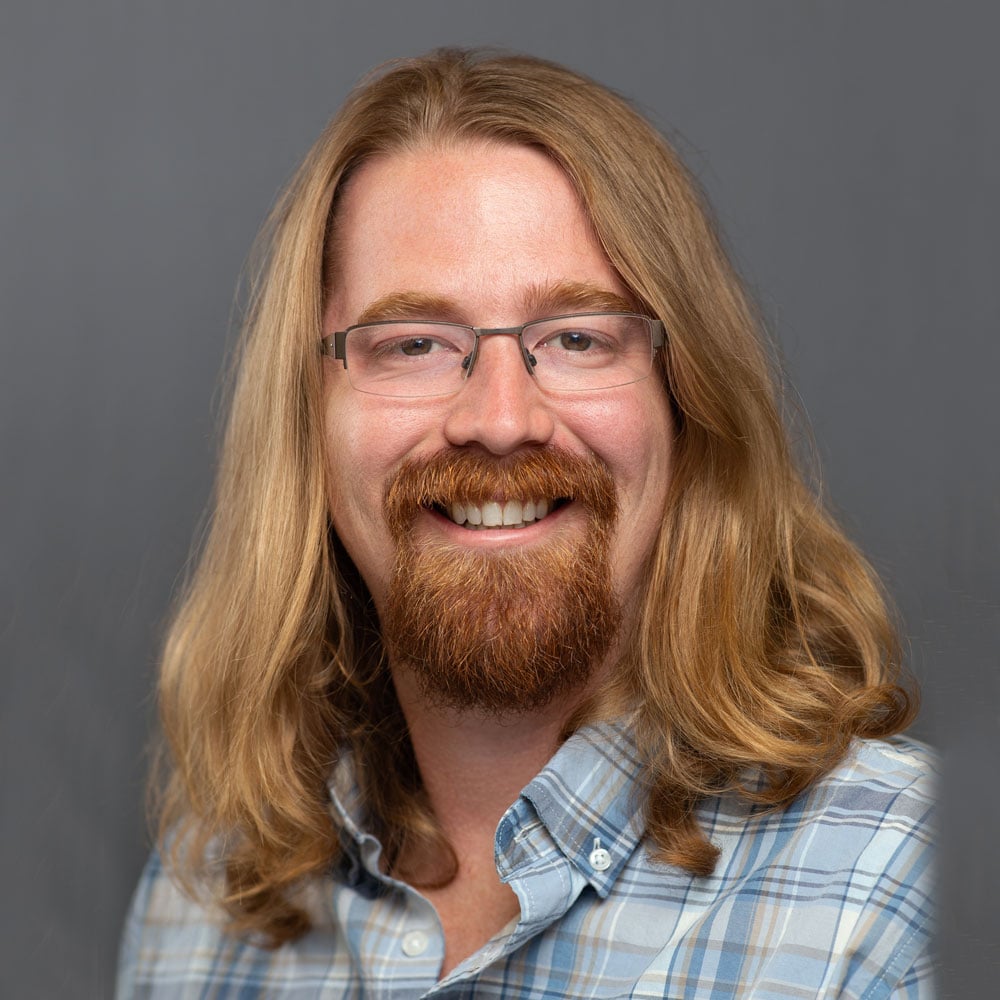Dentists often encounter patients suffering from caries in the posterior region of the mouth, a more challenging area for some patients to keep clean due to its location. Food particles and plaque tend to accumulate in these regions, leading to a higher incidence of cavities and performing Class II restorations on these teeth is a fundamental aspect of dental care. In this case, Dr. Brett Richins, DDS, demonstrates a Class II restoration on tooth #29 (mandibular right second premolar) using Transcend™ composite’s Universal Body shade with its advanced Resin Particle Match™ (RPM) technology. RPM allows Transcend composite to blend with most tooth shades using a single Universal Body shade, without the need for a blocker.
- Direct Occlusal Preparation: The procedure begins with the direct occlusal (DO) preparation on tooth #29, ensuring all carious tissue is meticulously removed.

2. Placement of Halo™ Band: A 4.5 mm Halo™ band is placed around the tooth using Halo tweezers to secure the occlusal tab, providing the necessary contour and isolation for the restoration.

3. Insertion of Halo Wedge: A small Halo wedge is inserted from the buccal aspect using the same tweezers. This step is crucial to ensure good adaptation of the matrix band to the prep. Halo wedges provide active wedging for enhanced separation.

4. Application of Halo Ring: The Halo universal ring is positioned, marking the readiness to begin the restoration process. This ring maintains the band’s placement and shape throughout the procedure, assisted by the active wedging of the Halo wedge.

5. Adaptation Check: The adaptation of the band is checked. Burnishing is generally not needed but can be performed if there are challenges in ensuring adequate proximal contact.

6. Etching: Ultra-Etch™ etchant is applied to the dentin and cut enamel for 15 seconds. This step is essential for increasing surface area and promoting better adhesion of the bonding agent.

7. Bonding: Peak™ Universal Bond adhesive is scrubbed into the dentin and painted onto the enamel for 10 seconds using an Inspiral™ Brush tip. This ensures thorough infiltration and coverage.

8. Air Thinning and Curing: The adhesive is thinned and dried for 10 seconds using ¼ to ½ air pressure. The preparation should appear shiny with no visible movement of the resin during air thinning. It is then cured for 10 seconds using the VALO™ X curing light with Standard Power.

9. Composite Placement: Transcend™ composite Universal Body shade is placed in increments of 2 mm or less, ensuring proper layering and curing between each application.

10. Matrix System Removal: The Halo matrix system is removed immediately after the composite placement, requiring minimal finishing.

11. Polishing: The restoration is finished using the Jiffy™ polishing points and wheels to achieve a smooth, lustrous surface.

12. Final Outcome: The completed restoration exhibits an anatomical contact and a natural appearance, achieved solely with Transcend composite’s Universal Body shade.

With help of the Halo matrix system, Dr. Richins was able to create a beautiful restoration with excellent anatomy in less time. Transcend composite’s Resin Particle Match technology ensured a well-balanced natural-looking result while only using one shade of composite. Together, they can help simplify Class II restorations while providing results clinicians and patients will appreciate.
About Dr. Brett Richins

After earning his bachelor’s degree in biomedical engineering from the University of Utah in 2008, Dr. Richins received his doctorate from the University of Pittsburgh School of Dental Medicine in 2012. He is a member of the Academy of General Dentistry, the American Dental Association, and the Utah Dental Association. He continues to pursue his education and frequently attends advanced courses that cover topics such as Endodontics, Implantology, Cosmetic Dentistry, Oral Pathology, TMJ, Sleep Apnea, and much more. He has also done humanitarian dentistry in underserved areas of Jamaica, Vanuatu, and Appalachia.








